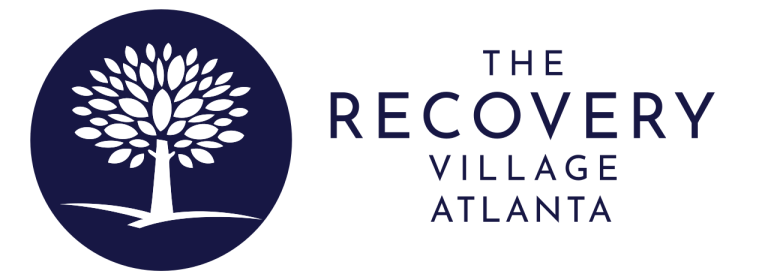Deciding between residential addiction treatment and outpatient care is a significant decision. Both types of programs are important steps toward recovery. Although both settings are focused on rehabilitation, each has its features and benefits.
Differences Between Residential and Outpatient Treatment
Inpatient treatment is also known as residential rehab. This is one broad category of treatment program for a substance use disorder. Then the other category is outpatient rehab.
Residential treatment programs are intensive, highly structured and supervised. They are designed for the treatment of severe addictions and substance use disorders.
Outpatient treatment is a part-time program allowing more flexibility. That way, patients can receive treatment while taking care of outside responsibilities at home, work or school. Residential rehab includes medical support at a greater intensity than an outpatient program.

It's time to get your life back.
If you are struggling with addiction and co-occurring mental health, our expert team is here to guide you every step of the way. Don’t wait— reach out today to take the first step toward taking control of your life.
Both the person with an SUD and their loved ones should understand the differences between the two programs before deciding on one. Exploring all available options can help put someone on a long-term path toward recovery.
Residential Treatment
Residential treatment features onsite living and requires patients to admit themselves. The environment is carefully managed by clinical and medical professionals. They can help address both substance use disorders and co-occurring mental health conditions. During residential treatment, patients receive around-the-clock medical and emotional support.
Types of Facilities
Different care levels fall under the umbrella of residential treatment. Some are more like a hospital, while others are modeled after a spa or resort. Some facilities have a lot of amenities, and others are simpler.
Support
Regardless of the setting and specific amenities, the 24-hour support and care remain the same across facilities. That’s a key tenant of residential treatment compared to other levels of care and types of programs. This high support level during and after treatment can be an essential part of the early days of treatment and beyond.
Preparing for Residential Treatment
Properly preparing for residential treatment is important, and the sooner someone gets started, the better. An entry date is set for admission, and then a person, with help from their loved ones when possible, should begin to settle things in their life. Before entering a residential treatment program, things to consider include talking to an employer, finding arrangements for children and other family members who may need care and determining the personal items allowed at the facility. Planning transportation to and from the facility will also need to be handled.
Family Support and Contact
Family involvement can greatly help recovery during residential treatment. Still, every center is going to have its own rules for contact. Family members can usually contact their loved ones during their residential rehab stay, providing encouragement and support. How often this communication can occur depends on the policy of the residential program. Visitation can be offered at some centers, while at others, it’s limited or not allowed at all times. Other programs encourage family visitation and may involve loved ones directly in the recovery process. This can occur through family education and therapy.
Daily Life
During residential rehab, the focus is entirely on healing without the distractions of daily life. The days in residential programs are carefully scheduled. A patient can expect to meet with a team of counselors, psychologists and psychiatrists one-on-one and in a group setting. Programs can last from 30 days to six months or more.
For most, the initial step of residential rehab is a medically assisted detox. During this time, physicians and clinical addiction specialists monitor a patient’s vital signs as substances leave their system. Cravings are challenging and common, often leading to relapse without a medical detox. The constant care during detox and other inpatient treatment helps reduce the risk of relapse. During a medical detox, the clinical team can provide medications and treatments to reduce withdrawal symptoms and cravings.
Outpatient Treatment
Outpatient treatment is less structured, restrictive and more flexible than an inpatient program. Two levels of outpatient care include partial hospitalization and intensive outpatient. Then, there are also standard outpatient rehab programs. Most people participate in outpatient treatment after completing a residential stay. However, for some people, it’s the first step of their treatment when appropriate.
A partial hospitalization program is the most intensive outpatient program at most facilities. The focus is on stabilization during the earliest days of recovery. A PHP program can require a full treatment day for most days of the week. At The Recovery Village Atlanta Drug and Alcohol Rehab, our PHP is residential, making it a unique, highly effective approach.
A step down from a PHP is intensive outpatient programming (IOP). Patients begin transitioning back to their day-to-day lives and responsibilities. They often attend treatment for several hours a day, anywhere from three to five days a week. There’s more flexibility to keep up with other needs and the chance to readjust to the world.
Outpatient treatment sessions can include individual and group therapy, relapse prevention and recovery skills. An outpatient program can last three to six months for most people, but for others, it can be a year or more.
Outpatient Detox Programs
A patient diagnosed with a mild or moderate SUD or withdrawal symptoms can do medical detox on an outpatient basis. This alternative to residential detox can be safe and effective while retaining a sense of flexibility. A treatment specialist determines which type of detox is appropriate. The patient must visit the treatment center for check-ups during this time. Doctors or clinicians could also provide on-site medications to reduce specific withdrawal symptoms.
Social Support During Outpatient Rehab
Living at home or in a sober living house connected with the program is possible during outpatient treatment. There are many advantages to working, keeping up with daily tasks and staying close to loved ones during treatment. There are also 12-step groups, such as Alcoholics Anonymous (AA), that may be a source of social support. These groups can act to reinforce the benefits of outpatient treatment.
The cost is a comparison factor when looking at residential vs. outpatient rehab. Inpatient care usually costs more than outpatient treatment because of the 24/7 psychotherapy and medical care. That said, price differences shouldn’t be the determining factor in choosing the best treatment path.
Call Today for Same-Day Admission at The Recovery Village Atlanta.
Choosing the right treatment program for your personal needs is a life-changing decision. It’s perhaps one of the biggest you’ll ever make for yourself or your loved one, putting you on a path toward long-term recovery. Addiction is a devastating, chronic illness, but one that’s treatable with the right approach. Working with addiction experts and taking part in support groups like AA can help you build the skills needed to avoid relapse.
To learn more about residential treatment at The Recovery Village Atlanta Drug and Alcohol Rehab or to begin the admissions process, reach out to our Recovery Advocates today.










